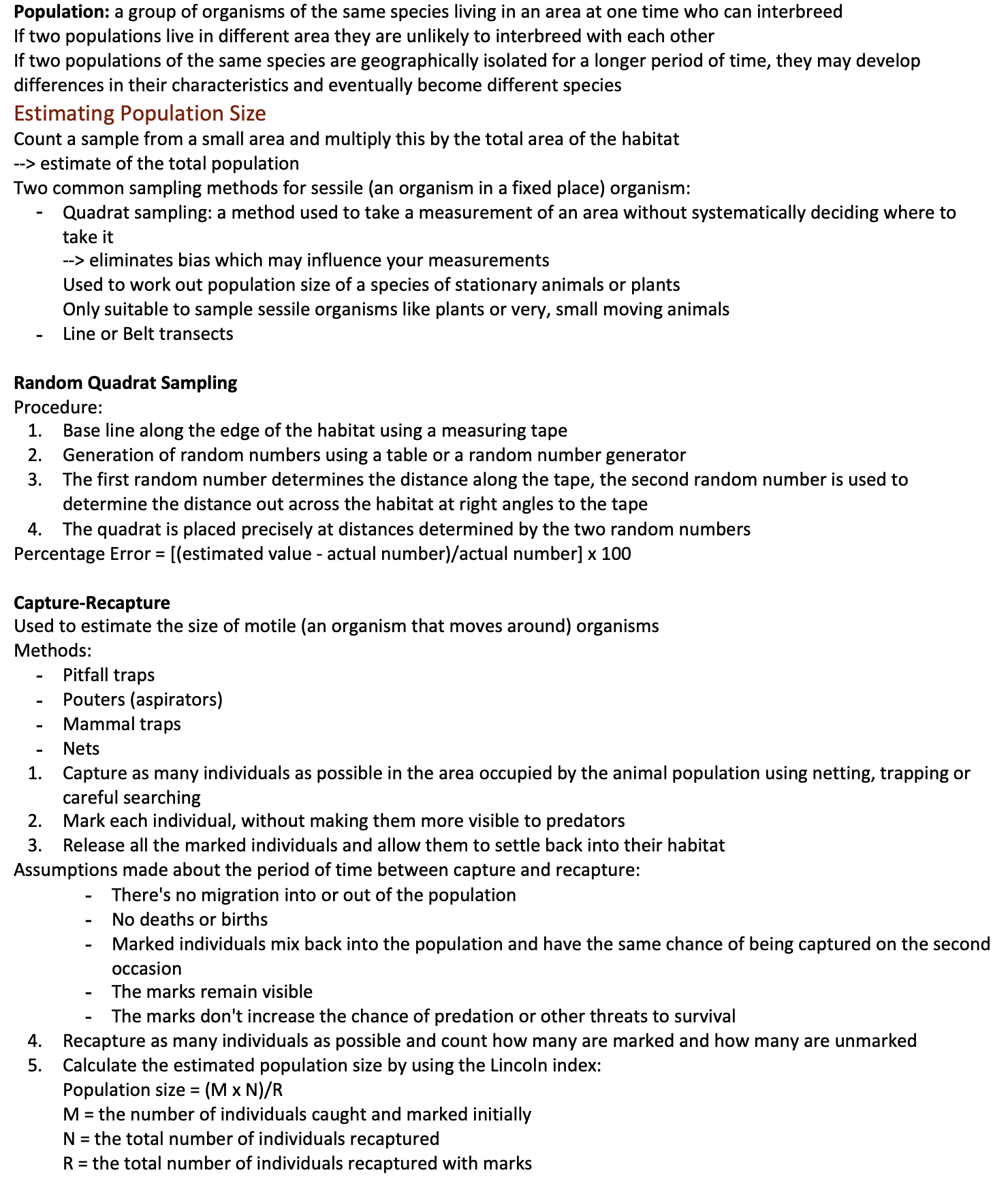Population
Population: a group of organisms of the same species living in an area at one time who can interbreed
If two populations live in different area they are unlikely to interbreed with each other
If two populations of the same species are geographically isolated for a longer period of time, they may develop differences in their characteristics and eventually become different species
Estimating Population Size
Count a sample from a small area and multiply this by the total area of the habitat
--> estimate of the total population
Two common sampling methods for sessile (an organism in a fixed place) organism:
Quadrat sampling: a method used to take a measurement of an area without systematically deciding where to take it
--> eliminates bias which may influence your measurements
Used to work out population size of a species of stationary animals or plants
Only suitable to sample sessile organisms like plants or very, small moving animals
Line or Belt transects
Random Quadrat Sampling
Procedure:
Base line along the edge of the habitat using a measuring tape
Generation of random numbers using a table or a random number generator
The first random number determines the distance along the tape, the second random number is used to determine the distance out across the habitat at right angles to the tape
The quadrat is placed precisely at distances determined by the two random numbers
Percentage Error = [(estimated value - actual number)/actual number] x 100
Capture-Recapture
Used to estimate the size of motile (an organism that moves around) organisms
Methods:
Pitfall traps
Pouters (aspirators)
Mammal traps
Nets
Capture as many individuals as possible in the area occupied by the animal population using netting, trapping or careful searching
Mark each individual, without making them more visible to predators
Release all the marked individuals and allow them to settle back into their habitat
Assumptions made about the period of time between capture and recapture:
There's no migration into or out of the population
No deaths or births
Marked individuals mix back into the population and have the same chance of being captured on the second occasion
The marks remain visible
The marks don't increase the chance of predation or other threats to survival
Recapture as many individuals as possible and count how many are marked and how many are unmarked
Calculate the estimated population size by using the Lincoln index:
Population size = (M x N)/R
M = the number of individuals caught and marked initially
N = the total number of individuals recaptured
R = the total number of individuals recaptured with marks
